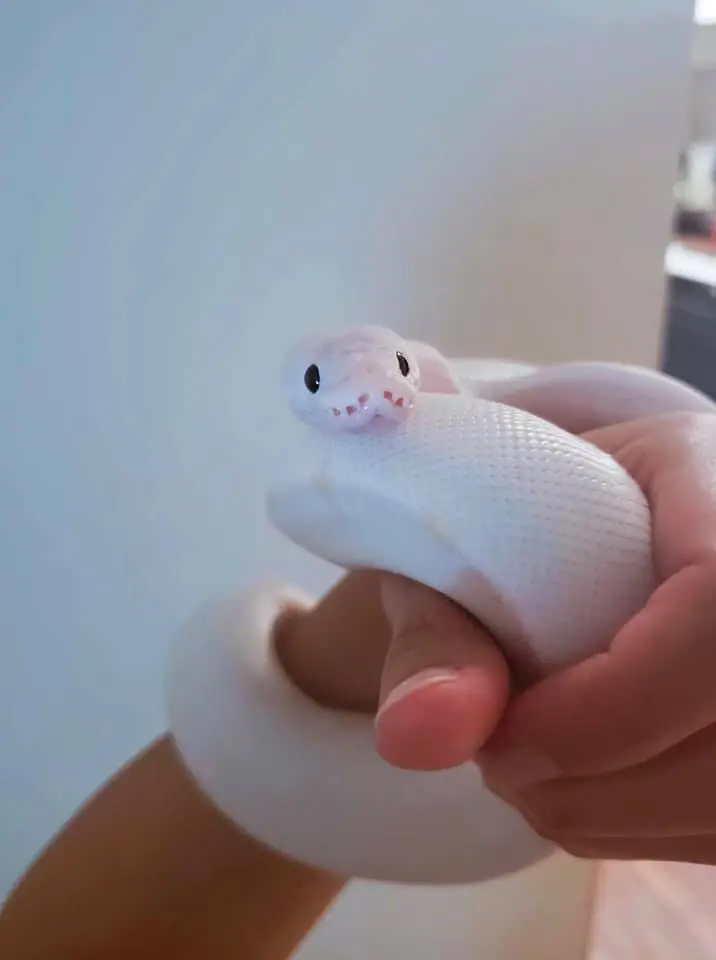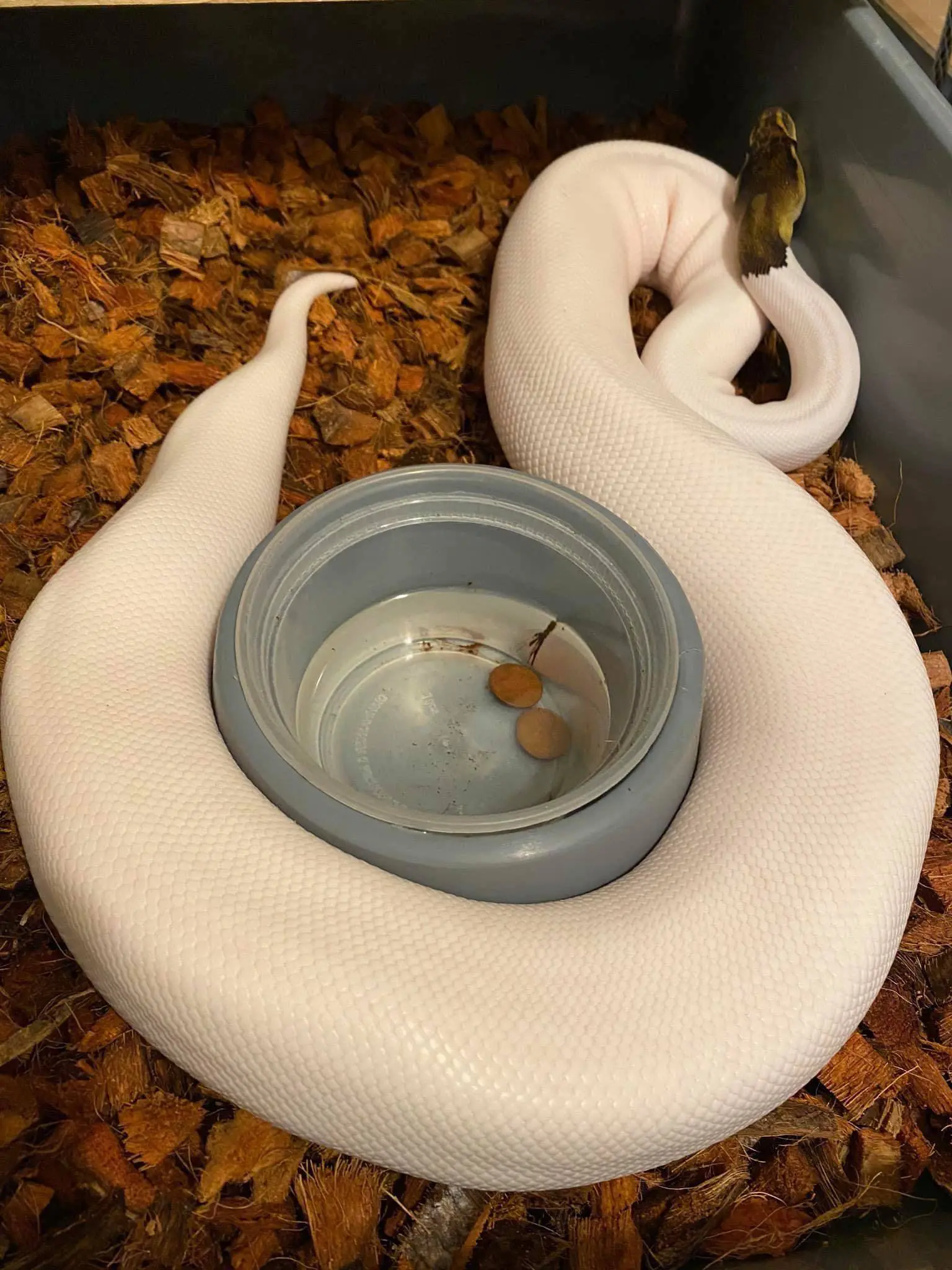Regurgitation and vomiting can be common in ball pythons. It is always recommended to have your pet checked by a vet, especially if the condition lingers.
There are many reasons why your pet ball python may be vomiting or regurgitating its food. Identifying the cause can help your pet digest its meal and stay healthy.
Difference Between Regurgitation and Vomit
Ball pythons tend to digest their food where they feel safe. They have considerably slower digestive systems than humans, which makes them vulnerable to digestive problems.
Most ball python owners don’t sit and watch their pet after it’s eaten, which is why you may return to the enclosure to find regurgitation or vomit.
Regurgitation
Regurgitation can be when your ball python expels its food shortly after eating. This is usually prey, which is mostly intact and can be caused by stress or habitat problems.
Vomit
Vomit, on the other hand, has already entered the stomach and has been partially digested. When expelled it will have a bad smell, the prey will be partially digested. You may notice white or yellow liquid nearby.
Vomiting in ball pythons is not as common as regurgitation and often means illness. It is a good idea to have your pet checked by an experienced vet to identify the root cause and provide effective treatment.
Why Does My Ball Python Regurgitate or Vomit?
Knowing why your pet may be regurgitating or vomiting up its food can help you stop it from happening.
Handling Stress
Of course, you want to take your python out to show your friend, not taking into consideration how stressful the experience can be for your pet or how long ago your pet ate.
When your python feels threatened it will empty its stomach, this is to allow it to escape quickly.

Handling can cause stress
Habitat Stress
So your ball python has eaten and you’ve returned it to the enclosure and there you see regurgitated or vomited food.
The reason could be stressful situations, which has resulted in your pet emptying its stomach in order to flee.
This can be someone tapping on the glass to a dog or cat jumping up against the side of the enclosure.
Related – Signs of a stressed ball python.
Overeating
Ball pythons are one of the snake species known for overeating, which can lead to regurgitation. While many animals know their limits, ball pythons will eat what is offered to a point where they can’t digest it anymore.
Ensure you offer a well-planned and balanced diet to provide your pet with the nutrition it needs without overeating.
When your python eats a rodent that is too big for it, the bacteria in the rodent decomposes while the python is still trying to digest it. Your pet may vomit up the rodent, which will be partially digested, to reduce the risk of becoming sick.

Overweight ball python
Temperature Too Low
Reptiles, including ball pythons, need heat in order to digest their food. The hotter the temperature, the easier they will digest the prey.
Even when the temperatures are a bit on the low side, your ball python may still eat, but will regurgitate the food due to its’ body temperature being too low.
Using a digital thermometer, you can ensure you keep the temperatures within the enclosure at optimum.
|
Area | Temperature |
|---|---|
|
Basking area | 88ºF – 92ºF |
|
Warm side |
80ºF – 85ºF |
| Cool side |
75ºF – 80ºF |
Too Much Water
Some pythons tend to drink a bit too much water after a meal, which can cause your pet to regurgitate its meal.
Illness / Parasites
Ball pythons are susceptible to digestive problems, which can be caused by internal parasites, bacterial infections, and more.
If your python is vomiting up its food and has any other symptoms, such as lethargy, foaming at the mouth, irregular breathing, blistered skin, or is unable to shed, ensure you get it to the vet as quickly as possible.
What To Do When A Ball Python Regurgitate Or Vomit
There are a number of steps you can take when you notice regurgitated food or vomit inside your ball python enclosure, these include:
Do a Spot Clean
If you notice any regurgitated food or vomit inside your ball python enclosure you are going to want to remove it as soon as possible and provide your pet with water. It’s best to let your snake rest, leave it be for a few days if a juvenile, or a week or two if adult.
Related – How to clean a ball python enclosure.
Check Temperature Levels
Take note of the temperature on the digital thermometer to ensure that temperatures are remaining at optimum.
Keep an eye on nighttime temperatures as your pet may be warm enough during the day to digest its food, but is struggling when temperatures drop at night.
If necessary, purchase a thermostat, which enables you to set minimum and maximum temperatures, should temperatures go outside of optimum, you will be notified.
Offer Food
If you are thinking that the prey you fed was too big for your python to digest, you can try and re-feed with smaller-sized prey. So rather than offering a small rat, consider a medium-sized mouse.
Visit the Vet
If you make the necessary temperature changes, you reduce stress and you provide the right sized prey per meal and your pet continues to regurgitate its good after more than one attempt, it’s time to visit the vet for analysis and diagnosis.
Summary
Regurgitation is more common in ball pythons than vomiting and relatively easy to fix. Simply check the temperatures, ensure you provide the right size prey and you reduce stress.
If you notice the food is partially digested and days after your pet has eaten, usually accompanied by white or yellow liquid, then visit the vet soonest for examination and treatment.